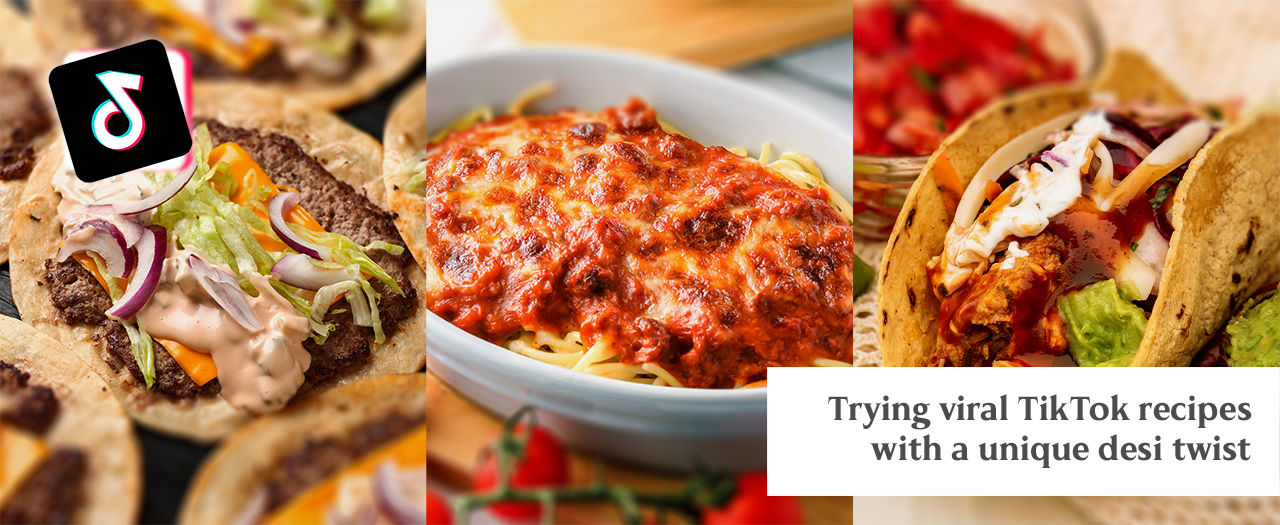Eating lentils, vegetables, meat, curry, etc., served on top of rice is a common way of combining a staple with a main dish across Asia and the Middle East. The basic concept of rice bowls has always been present in Southeast Asia. The desi rice bowl emerged naturally under broader regional influences and respectfully nods to its wider Asian origins. Today, the rice bowl has become an international comfort food, served in various ways.
The rice bowl is all about ease and comfort. It is quick to prepare and easy to eat, with all your food in one place. It is also very versatile. Different kinds of rice can be combined with many other ingredients to put together a meal that is all about your individual choice.
History and origin of rice bowls
It is generally agreed upon that the rice bowl originated in ancient Japan. The modern Japanese rice bowl known as donburi is thought to have evolved from a dish called hauhan, consisting of rice, vegetables, and dashi broth, served in temples from 1333 to 1573. The modern donburi became popular later, during the Edo period, from 1603 to 1868. The dish consisted of grilled eel served on rice. Initially, it was served to theater goers in Tokyo, but it became widely popular and soon stalls opened up offering different varieties of donburi all over the city. It is also thought that the concept of this dish spread from Japan to Korea and China.
The origin of the bowl itself is again found in ancient Japan, where a combination of practicality and aesthetics created an optimally designed bowl for eating a rice dish. In ancient times, rice in Japan was served in lacquered bowls, unlike the ceramic rice bowl. With the increased popularity of the tea ceremony, matcha bowls were designed. People found that it was easy to eat rice from these tea bowls. The shape of the rice bowl evolved from matcha bowls, finally reaching its present form.
The term ‘desi rice bowl’, associated with eating rice and other food from the same bowl, is more of an ‘update’ rather than a completely new culinary influence on desi-style food. In India, brass and clay bowls were crafted for serving and eating food since ancient times. However, rice, lentils, vegetables, etc., were served separately in little bowls on the traditional Indian thali, or the banana leaf in Southern India. The broader Asian influence led to combining foods in one bowl, making it simpler to serve and eat.
Desi rice bowls for weeknight dinners
Desi-style rice bowls are a great choice for weeknight dinners. They combine rice with toppings such as lentils, vegetables, meat, and curry, more often using aromatic rice such as Basmati.
The dish is quick and easy to prepare, especially if you choose a Kaiser curry—whether it’s the chicken kabab curry or all-around favorites like butter chicken and chicken tikka masala. If you choose a curry, it will help blend and bind all the flavors to produce a truly satisfying desi rice bowl. But even if you don’t, you can always add a sauce.
Rice bowls can be prepared to combine your taste preferences and nutrition goals in a single healthy and balanced meal. If you are a desi cuisine lover looking for a delicious meal that takes care of all your cravings and nutritional needs, desi rice bowls will provide you with an ideal meal for dinner. They bring together healthy carbs in rice, vitamins in veggies, and meat for your protein intake.
When you make a desi rice bowl, you can choose the kind of rice and topping that is your favorite. You can opt for simple white or brown rice and add one of your favorite Kaiser curries, with side dishes such as vegetables, raita, salad, and condiments such as mango or plum chutney, pickles, etc. You can also go for flavored desi-style rice to match with a curry.
Desi rice bowl recipes
Here are a few ideas to inspire you to start making your very own desi rice bowls:
Cook jeera or cumin rice with this easy recipe from Richa and pair it with Kaiser’s creamy butter chicken; make some turmeric rice with Puja’s recipe and try it with Kaiser’s chicken kabab curry. You could also cook mint rice with a quick recipe shared by Patel, and pair it with Kaiser’s chicken tikka masala.
You don’t have to stick to curries. You can have your rice bowl with the type of rice you prefer, any of your favorite kebabs, and a side of your choice. For instance, you can have a plain white rice bowl with Kaiser’s Adana kabab for a Mediterranean twist, alongside the classic Indian raita. Another great idea is to enhance your desi rice bowl dinner by rewarming the dish with added cheese in a pan, flattening the rice, and allowing it to develop a crispy crust underneath—Korean style!
You can design your desi rice bowl just as you like, serving food on top of rice, or on the side. You can organize your favorite curry, kebabs, vegetables, and sides around the rice in any order you prefer. There is no right or wrong here; the resulting rice bowl will always look colorful and as pleasing to the eyes as the taste buds.
You can choose an Asian-style desi ceramic, brass, or stainless steel rice bowl. You can eat with a spoon or desi style with your hand, scooping up the food in little balls with your fingers. Options are limitless for you to create your desi rice bowl, one that matches your individual taste and needs for an effortless and comforting dinner.
Any time rice bowls with a desi twist
Needless to say, not only do desi rice bowls make an excellent dinner, they’re a great option for any meal. You can have one for brunch by combining simple white rice with Kaiser’s fully cooked falafel and fresh salad, or have a light lunch with rice and Kaiser’s chicken cutlet alongside steamed vegetables.
In many Asian countries, rice is also eaten for breakfast. For instance, in Japan, rice breakfast is prepared as a salty white rice porridge called congee, which can also be cooked in a hearty broth. If you want to expand your breakfast menu, desi style with rice, why not try white rice with Kaiser’s Paneer 65 and store-bought mango chutney?
Leftover desi rice bowl ideas
Eating leftovers helps avoid food waste. Warming up leftover dinner for breakfast the next day is a common desi practice. Leftovers from a desi rice bowl present many possibilities for new dishes.
If you didn’t finish your desi rice bowl dinner, warm it up and have it for breakfast. If it’s a weekend and you are feeling adventurous, take the leftovers and combine them to make desi rice pancakes with some carrot chutney—try this lovely recipe from Sheetal.
You can use just the rice, or shred any leftover meat and vegetables into your pancake batter. Of course, if you do so, you will have to adjust the quantity of spices from the recipe you use for pancakes to counter the already present seasoning in your batter, so that you don’t end up with pancakes that are too salty or overly spicy.
You don’t have to stick to preparing leftovers only for breakfast. You can also make patties with leftover rice for a midday snack. Find the recipe by Nandita, but remember not to add too many ingredients if your leftover rice is flavored or if you also have leftover meat and vegetables that can be shredded and added into the patties.
Concluding words
Let the versatile, healthy, delicious desi rice bowl spark your imagination!
Just remember that each humble grain of rice is a precious gift and deserves our attention and respect; like Kaiser’s high-quality products, a rice bowl will never let you down.



